Tina Modotti – “Some Kind of Lady!”
In the first week of February 1939, as Spain’s Civil War wound down, a Mexican diplomat was driving through an abandoned Spanish village about 20 miles south of the French border. To the north, refugees by the ten’s of thousands were trying to get into France, escaping the vicious Guernica-esque Fascist onslaught coming up from the south.
The diplomat noticed a women “sitting alone at one of those outdoor coffee shops”. She was small, slightly more than five feet, a very slender middle-aged woman. He offered to take her to safety. In his words: “She refused…She was waiting for the [retreating Republican] army which was on its way to that small town, and she knew that [her companion] was coming with it. I told her she was in great danger [from the Fascist]…I tried to persuade her to come with me…Well she refused my offer firmly…I left, it was about six in the evening the sun was shining but gave no warmth. The whole scene, the entire situation reinforced by the winter sun, the peasants escaping from the mountains, the army retreating and the image of her, sitting alone,
with that waiting, searching, contemplative look…”
This small unpretentious contemplative solitary lady sitting at a table in an abandoned war torn village belied an Olympus giant. She was the unity of Apollonian reason and Dionysian passion that Nietzsche thought the essence of Greek Tragedy: a tragic hero driven by Dionysian passion to bring Apollonian order to a chaotic world; who understands her fate is to suffer and fall because the world will not yield – nor will she. She was a sweat-shop machine operator, seamstress, model, stage and screen actress, photographer, business manager, artist, spy, hospital administrator, intelligence operative, writer, bodyguard, linguist, nurse, combatant…In short, she was Tina Modotti.
……………..
Born in Udine, Friuli, Italy in 1896, at the age of 13 she had to drop out of school to help support her family. She worked in a silk-spinning factory. The labor of such workers, the majority women, was hard and exhausting. It was in the Udinese sweatshops that Tina began her journey towards radical proletarian photography, politics and war. She started work scooping up silk cocoons from basins of hot foul-smelling water, and peeling off their coverings. After a few days her hands were swollen and raw. She was promoted to steam-powered winders, working with arms and hands flying in a blur, and overseers always at their backs evaluating production quotas. Still the girls working those machines maintained spirit by singing “They Call Me Mimi” from La Boheme and Friulian love songs. Scenes of the singing women rice workers, in the film “Bitter Rice” comes to mind. Showing discipline under conditions of adversity already at this young age, she was promoted again to a weaver’s position. However, promotion did not mean easier work or significant wage increases. Years later, Tina summed up her families condition succinctly: “Misery and hunger unite a family more than riches and comfort.” By that standard, the Modotti family was
very united indeed.
In 1913 Tina left Italy to join her father, a 1906 emigrant, in San Francisco. A mature disciplined worker, she found work as a seamstress. She developed into a beautiful girl and she benefited from the universal law of society: ‘beauty avails opportunity.’ Her employer realized that she would be a good model for the dresses they manufactured. It was at this point that she began the transition from proletariat to artist.
Amateur theatrics abounded in the city’s garment industry and Tina’s beauty afforded her an
opportunity to enter into the acting profession. She had a remarkable stage presence, the intelligence to memorize lines, and a gift for recitation. She was a great success. Beauty, of course, brought men. And, one in particular would put her on a trajectory that would determine the rest of her life – Roubaiz de l’Abrie Richey or simply ‘Robo, as he was called. Robo brought Tina into a circle of Bohemian artist and writers. Perhaps predisposed by singing songs from La Boheme in the Udine factory, Tina immediately embraced their art and anti-middleclass conventional life style. She was leaving her proletarian life for the life of the arts. However, as she matured as an artist her proletarian roots would manifest themselves again in her work. Eventually, she would come full circle, returning and immersing her total being in proletarianism as a revolutionary communist.
At the point where her fame as a stage actress was reaching a zenith in 1918, she, without notice, simply up and left San Francisco with Robo and went to Los Angeles. She just walked away! Her beauty and acting experience lent itself to getting parts in silent films. While her beauty served her well, she was, as the saying goes: “Not just another pretty face.”
Tina was intelligent and had an inner demon that drove her on a ‘spiritual quest’; the desire to find a meaningful and purposeful life beyond material wellbeing. Indeed, the willingness to forgo material wellbeing for the spirit would come to be her predominate trait. What was characterized as a ‘bohemian’ life style should not be construed as a sixties-esque hippy dropout counter culture. Hers was a proactive intellectual and spiritual quest for meaning and purpose within, not apart from, society. For example, while in L.A. she became steeped in the works of the philosopher Friedrich Nietzsche, and especially his book “Beyond Good and Evil.” Later in life, her favorite saying of his, one that would come close to the essence of her life: “What doesn’t kill you makes you stronger.” The tempered steely woman sitting alone in that abandoned war torn Spanish village was the product of aggregate pain that time and again came close, but did not kill her.
In Los Angeles Tina encounter two things that would affect the rest of her life. She was introduced to Mexican culture and the renowned photographer Edward Weston. She became Weston’s favorite model at the same time Robo went to Mexico City and found that it was an “artist’s paradise.” Tina went to join him; however, he was taken with smallpox. By the time Tina got there he had passed away. Nevertheless, she became intrigued with Mexico. Accordingly, in July 1923 when Edward Weston offered her a job as his assistant for a photo project in Mexico and said he would teach her photography she accepted.
In Mexico she acquired the craft (photography) to express her artistic passions. By December 1924, Tina had mastered the craft so well that Weston could confidently leave her in charge of his studio and return to the U.S. There upon, she began finding her own identity as a photographer. At first, that identity was expressed as pure art: composition, form, and contrast of objective subjects. For example, what she could do with flowers, telephone wires, sugar cane, etc. was truly amazing. However, soon her identity took her back to her proletarian roots in Italy. She presented the poverty, the beauty and the dignity of Mexican peasantry that is unrivaled in photography.
As her artistic instincts brought her closer and closer to the plight of the peasants, her politics naturally move in the same direction. She became increasing involved with the Communist Party of Mexico. The great traumatic turning event in her life came on January 10, 1929 when world-renowned exiled Cuba revolutionary Julio Antonio Mella was assassinated while she walked with her hand in his arm. He literally fell into her arms. She loved him as a man and shared his passion for the liberation of exploited people. The assassination was associated with an intense Mexican government repression of the Communist Party in general and Tina in particular.
She was arrested on February 7, 1930 and held in solitary confinement for five days. Then
things really got bad! She was brought to the Peniterciaria prison; know for its inhuman conditions. She was put into a cell of steel and stone, with an iron bed that had no mattress, a filthy toilet, no electric light, rancid food, and allowed no visitors. She was released after thirteen days and given two days to prepare to leave the country. She was put onto a rat-invested ship for a thirty-four day journey to Europe; eventually entered Germany for a six-month sojourn, and in October 1930 she moved to the Soviet Union.
In the Soviet Union she threw herself into the organization know as International Red Aid, which was an international social service organization, connected to the Communist International. The organization conducted campaigns in support of communist prisoners and gather material and humanitarian support for workers. Fluent in six languages she started as a translator and writer. Later these same facilities with languages lead her into international courier and intelligence work for the organization throughout Europe.
When the Spanish Civil War broke out in 1936, Tina was sent to Spain to organize Red Aid
hospitals and other humanitarian services in support of the elected Republican government. She worked with the famous Doctor Norman Bethune who invented the ‘mobile blood bank’ system that, for the first time in history, made blood transfusions in the field possible. Tina was with him administering aid on the Malaga-Allmeria highway where columns of women and children refugees trapped between sheer stone cliffs and the sea were strafed and bombed mercilessly by Fascist planes.
After the war, Tina managed to get back into Mexico with an illegal passport. On January 5, 1942, at the age of 45, she passed away from a chronic heart condition. A photo of her face while lying in casket shows a serenity that brings to mind her sitting alone in the Spanish village. As then, the outward appearance of serenity contradicts the raging passion that characterized the life of Tina Modotti – ‘Some Kind of Lady!’
……….
Italian Americans know so little about their history. They know so little about the insults and degradations foolish Italy heaped upon their grandparents, who in turn heroically shouldered their burden and created a new Italian culture in America.
There is no culture without history! There can be no Italian-American culture if there is no Italian-American history. We get so exercised over our children getting College Board AP Italian credits. We want them to know the language their grandparents never spoke; we want them to order food in Tuscany their grandparents never ate; we want them to see the Renaissance art works their grandparents never saw. But, we don’t want them to know their grandparents! Meanwhile, our diasporic history and culture continues MELTING into the POT! From the point of view of Italian Americana: a child of Italian descent reading one of the many biographies of Tina Modotti has more value than knowing all the vocabulary, conjugations and inflections on an AP Italian test.






























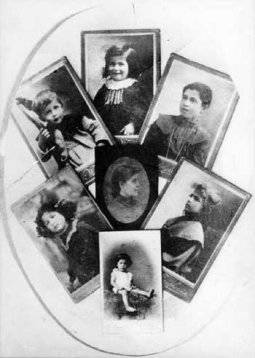
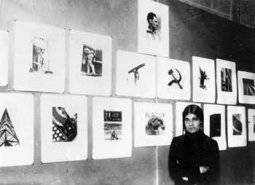
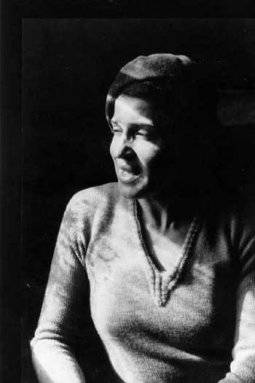
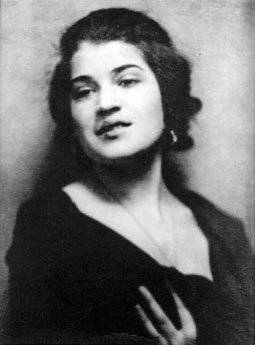
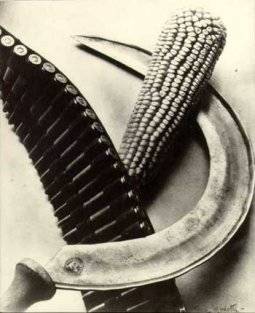






i-Italy
Facebook
Google+
This work may not be reproduced, in whole or in part, without prior written permission.
Questo lavoro non può essere riprodotto, in tutto o in parte, senza permesso scritto.